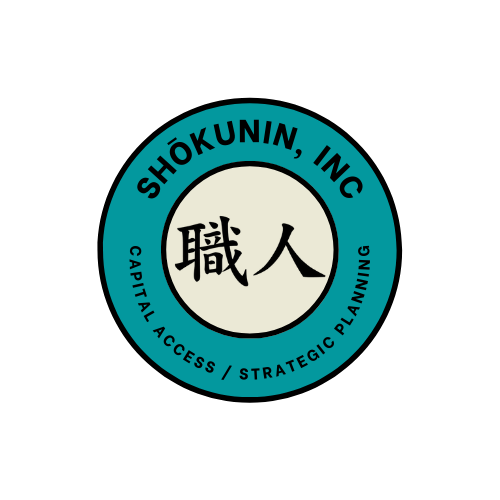- Why is Healthcare a key to success in your retail property space?
- Choice is like oxygen. Desire won’t get you there.
- What should you stop doing today to increase your business value?
- How does a bank use my personal financial statement to approve my business loan?
- How to decide to lease or become an owner user for your business.
- What is the most important decision you make in life?
- Who you partner with your spouse.,
- Business loan or line of credit?
-
- Business loan = start, support, expand existing business, Specific amount of money, with a term, predictable payment each monty, cash flow rate, burn rate,
- Fixed rate
- Credit line – specific amount/limit, draw as you need it – good for might need quick access in the future,
- Variable rate
- Business loan = start, support, expand existing business, Specific amount of money, with a term, predictable payment each monty, cash flow rate, burn rate,
-
Seven things bankers look for to approve business financing
- Credit – personal – 600 FICO – it’s a snapshot.
- Time in Business – the longer the time. 1-2 years minimum. 5-10 years – puts you in strong territory for financing.
- Cash Flow – How are you managing the cash in your business – what stays in the bank? If crushing sales, favor the cash flow over credit and time in business.
- Profit – under $250K – if 2020-2021 was lousy because of COVID, can look past it.
- Industry Type – some lenders are better at certain industries than others.
- Use of Funds – Lenders want to understand what you’re planning to do – hopefully to grow business, drive revenue, and profit, moving, new product, more inventory.
- Ability to Repay – even if you get approved for less, use what you get and scale and repay to get more financing down the road.
Breaking Down the Loan Application Process for Business or Commercial Real Estate
https://www.youtube.com/watch?v=zufRoL98JC4
Front-end best practices
Must Do’s in a credit memo
SBA Credit memot format
Financial statement analysis
Calculating global cash flow
Reviewin ga business and personal tax return
Calculating adequate working capital
SBA Questions / Screen-Out Lettters
Basic debt service calculation
Add backs – rent, interest, depreciation, officer’s salary, -draw = cash available to service debt
Projected debt service
Excess cash flow =
DSCR = cash available/project debt
Global debt service
EBITDA – OC
Affiliate 1
Affiliate 2
Total Existing Cash Flow
Personal Debt-Guarantor – 1
2
3
Existing debt – OC
Existing debt affiliates
Proposed new loan
Total cash flow / total debt = global debt service.
Usually doesn’t include
OCF = EBITDA
DS = P&I of all business debt
DSCR -= OCF/DS
Unfunded CAPEX = capex-capex by funded debt, subordinated debt or equity by borrower.
Business Tax Returns (1120. 1065)
- Front page gives bulk of information
- Other expenses (find correlating statement to make adjustments)
- Looking for amortization – not included in depreciation
- Excessive / one time fees as an add-backs (legal, startup costs, etc.)
- M-1 and M-2 Adjustments
- Looking for cash flow – if see huge cash adjustments, want to account for those (Distributions, meal expenses)
- Year to year comparison
- Loans – detailed income statement anomalies – explain those – not big on categories for tax returns versus income statement (what you do as an owner versus what the accountant does)
- K-1’s
- Looking for distributions
- Percentages of ownership – many don’t know = eligibility of who the real owners are – lenders can have six month look-back period.
Personal Tax Returns
- Schedule C Income
- Wage Income – if ongoing or not
- Sole proprietorship.
- Affiliates – considered in global cash flow
- Regozniging Potential Affiliates
- Schedule E if you failed to mention other affiliates
Adequacy of Working Capital – lender must determine and justify this for their audits.
- What is the cash cycle
- How much time will pro forma working capital support the business
- How much is available in other lines of credit?
Working Capital Analysis
- Determine cash expenses of the business
- Net sales – net income-depreciation/amortization = cash expenses
- Calculate cash needs of the business
- Cash expenses/365 x cash cycle in days = amount of money you need before you “earn” a dime.
- Cash cycle = AR days + inventory days – AP Days = Cash /cycle Days
- Determine what sources will support the cash needs
- Can’t just be “I’ll tap into 401(k)”
NMet sales – $2.0M
-Net income $50K
-Depreciation $75K
Cash Expenses = $1.875M
Cash cycle days
45 a/r days
+35 inventory days
-30 a/p days
= 50 cash cycle days
$1.875/365 * 50 days (how long it takes to cycle your cash) = $256,849.32
Going to need $256K to start
Calculating cash needs
$1.875/
Calculating Monthly working capital needs of business:
Annual COGS
+ OPex
+ Draw
- Owner’s salary
+ non recurring expenses
- Depreciation / amortization
= annual operating costs/12
Typically want 30-45 days of working capital.

